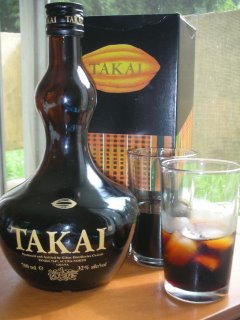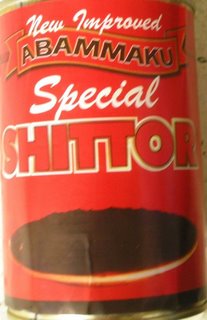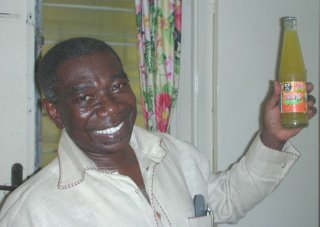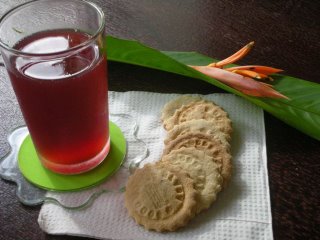Culinary Entrepreneurship in Ghana

There is a surging sense of hope and creativity regarding things culinary in Ghana. Some of those, like fat-laden fried chicken, potato “chips” (fries), pizza, fried rice and other imported fast food crazes, don’t excite me at all.
What delights me and my senses is some of the emerging “made in Ghana” foods featuring Ghanaian products. A sampling is included here. There's Takai, a liqueur “made from natural cocoa and coffee blended with other natural aromas” produced and bottled in Ghana by Gihoc Distilleries. The name “Takai” comes from a traditional dance and music of the Dagbamba/Dagomba people of Northern Ghana. The packaging is attractive: a dark box wrapped with a printed strip of kente below a golden cocoa pod (Ghana’s high-quality cocoa has been called its “black gold”). I drank Takai straight the first time, over ice the second. As both a coffee and chocolate lover, I savored the smooth blending of these ingredients with vodka. It was served to me as an aperitif , but would equally well act as an after-dinner liqueur. It also would likely blend well with other things, like cream. And the price in Ghana is under 7 cedis (less than 7 dollars)!
 Designer and seamstress Abammaku, of Abammaku's Fashions
Designer and seamstress Abammaku, of Abammaku's Fashionsin Accra, has a son serving in the military overseas. He missed eating shito (or shitor), Ghana's lovely distinctive dried
Ghana is also famous for its pineapples, especially its very sweet, low-acid "sugar loaf" pineapples (also known as royal pineapples). Dr. S. K. Dapaah, formerly in the Faculty of Agriculture at the University of Ghana, and once the Chief Director of the Ministry of Food and Agriculture, grows pineapples and bottles his own "Princess" brand pineapple juice, free of preservatives, coloring, or added flavors. We've enjoyed it by the case during our stay the past 6 months.
 Finally, the humble and faithful cassava has been disrespected and taken for granted for many years. Though eaten daily in many households in the form of fufu or gari, it has rarely been used as a flour. Some entrepreneurs are now experimenting with using it to replace wheat flour in a variety of products, such as the cassava cookies (or "biscuits") made by Godsway Biscuit Factory in Hohoe in the Volta Region of Ghana and shown below with a glass of mango-bissap (bissap is a drink made from dried hibiscus flowers and it blends well with fruit juices such as mango or pineapple, or herbs like lemon grass).
Finally, the humble and faithful cassava has been disrespected and taken for granted for many years. Though eaten daily in many households in the form of fufu or gari, it has rarely been used as a flour. Some entrepreneurs are now experimenting with using it to replace wheat flour in a variety of products, such as the cassava cookies (or "biscuits") made by Godsway Biscuit Factory in Hohoe in the Volta Region of Ghana and shown below with a glass of mango-bissap (bissap is a drink made from dried hibiscus flowers and it blends well with fruit juices such as mango or pineapple, or herbs like lemon grass).


4 Comments:
I love the photos-esp of Mrs Abammaku & Dr. Dapaah.
What wonderful memories and terrific food and drink you got to sample. Thanks for sharing!
Do you know Mexican 'jamaica'? It too is made from hibiscus flower. I wonder how it compares to 'bissap'...can you describe how bissap is concocted?
TheCulinary Entrepreneurship Program is a series of rigorous classes for culinary professionals and students who are looking for other unique ways to earn an income in the food industry. This program established and taught by renowned experts in various fields within the culinary arts and dedicated to professionals who want to break out of a particular place or area of expertise within the culinary industry or to students enrolled in customary cooking and hospitality programs. It gives a chance to study from experts as you network with equals who can open doors for you.
http://www.culinaryschoolsprograms.com/
Post a Comment
<< Home